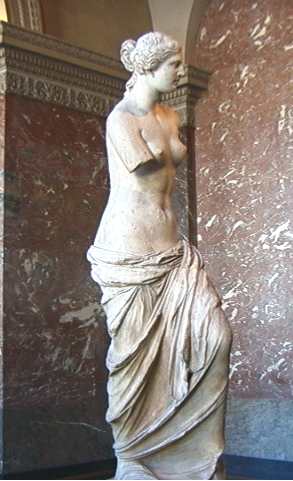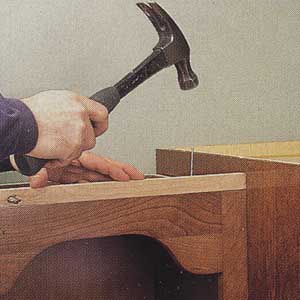The contribution of the wedge to early civilisation.
The wedge is a simple machine whose use throughout history has been understated. It changes the direction of a downward force to a sideways force.

As the hammer hits the wedge the downward force is changed to a sideways force pushing the object that the wedge is embedded into sideways.
 Early humans smashed rocks together with expert skill to create sharp edges.
Early humans smashed rocks together with expert skill to create sharp edges.
An axe is an example of a wedge as is any sharp instrument used for cutting.


The statue shown above is one of the most famous works of ancient Greek sculpture. It depicts Aphrodite, the Greek goddess of love and beauty.

Is the machine shown on the right acting as a wedge? Explain.

A common machine used to punch holes in cans.
Simple machines change the direction or the size of the force that is applied. Why is the wedge considered a simple machine? Explain.
Which one of the following is not considered a wedge?
a) A knife used to cut bread.
b) A screw driver used to turn a screw.
c) A nail driven into a piece of wood.
d) A spear thrust into a tree.
What was the earliest example of the wedge used as a simple machine?
Jonathon uses an axe to cut a wooden log. He is asked how this simple machine works. "It simply changes the direction of the force" Jonathon sais.
Is he totally right? What else does the axe do?
What contribution has the wedge made to the development of civilisation? When responding to this question consider how early humans defended themselves, built wooden huts using nails and wood and created marble sculptures that depicted their culture.